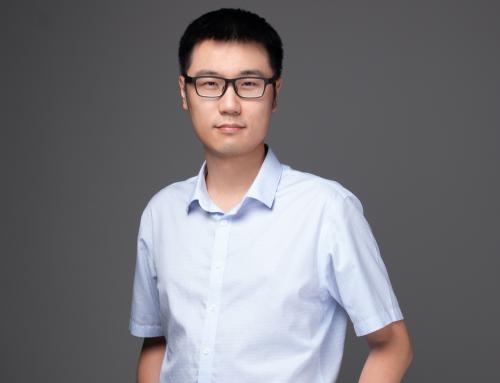Faculty
Self-introduction:
Xi did his BSc in Experimental Medicine in Peking University Health Science Centre in Beijing, where he became interested in all the techniques used in biochemistry and molecular biology. After graduation, he joined Prof. Andrew Sharrocks’ lab at the University of Manchester as a PhD student, studying the DNA binding specificity of different Forkhead transcription factors. During this period, he discovered an evolutionarily conserved transcription factor complex that regulates G2/M cell cycle transition. After his PhD, he joined Dr. Sarah Teichmann’s group at the European Bioinformatics Institute as a postdoc to carry out single cell genomics research. In 2016, the Teichmann team moved to the Wellcome Sanger Institute. Xi moved with together with the group and became a Senior Staff Scientist. Xi has joined the Department of Biology in SUSTech as an Assistant Professor since 2019.
Research Interests:
(1) Single cell genomics techniques development.
(2) Use T cell development and stem cell differentiation as model systems to study roles of transcription factors and chromatin complex during cell fate decision and memory.
Professional Experience:
2019 – present, Department of Biology, SUSTech, Assistant Professor
2016 – 2019, Wellcome Sanger Institute, Senior Staff Scientist
2013 – 2016, European Bioinformatics Institute, Postdoctoral Fellow
2012 – 2013, The University of Manchester, Research Associate
Educational Background:
2009 – 2012, PhD, The University of Manchester
2005 – 2009, BSc, Peking University Health Science Center.
Selected Publication:(* co-first author)
Research articles:
1.Henriksson, J.*, Chen, X.*, Gomes, T., Ullah, U., and Meyer, K.B. (2019). Genome-wide CRISPR screens in T helper cells reveal pervasive cross-talk between activation and differentiation. Cell 176, 1–15.
2.Zhang, W.*, Chronis, C.*, Chen, X.*, Zhang, H., Spalinskas, R., Pardo, M., Chen, L., Wu, G., Zhu, Z., Yu, Y., et al. (2019). The BAF and PRC2 Complex Subunits Dpf2 and Eed Antagonistically Converge on Tbx3 to Control ESC Differentiation. Cell Stem Cell 24, 138–152.e8.
3.Chen, X., Miragaia, R.J., Natarajan, K.N., and Teichmann, S.A. (2018). A rapid and robust method for single cell chromatin accessibility profiling. Nat. Commun. 9, 5345.
4.Jia, G.*, Preussner, J.*, Chen, X.*, Guenther, S., Yuan, X., Yekelchyk, M., Kuenne, C., Looso, M., Zhou, Y., Teichmann, S., et al. (2018). Single cell RNA-seq and ATAC-seq analysis of cardiac progenitor cell transition states and lineage settlement. Nat. Commun. 9, 4877.
5.Hagai, T., Chen, X., Miragaia, R.J., Rostom, R., Gomes, T., Kunowska, N., Henriksson, J., Park, J.-E., Proserpio, V., Donati, G., et al. (2018). Gene expression variability across cells and species shapes innate immunity. Nature 563, 197–202.
6.Pramanik, J., Chen, X., Kar, G., Henriksson, J., Gomes, T., Park, J.-E., Natarajan, K., Meyer, K.B., Miao, Z., McKenzie, A.N.J., et al. (2018). Genome-wide analyses reveal the IRE1a-XBP1 pathway promotes T helper cell differentiation by resolving secretory stress and accelerating proliferation. Genome Med. 10, 76.
7.Chen, X., Ji, Z., Webber, A., and Sharrocks, A.D. (2016). Genome-wide binding studies reveal DNA binding specificity mechanisms and functional interplay amongst Forkhead transcription factors. Nucleic Acids Res. 44, 1566–1578.
8.Yu, Y., Tsang, J.C.H., Wang, C., Clare, S., Wang, J., Chen, X., Brandt, C., Kane, L., Campos, L.S., Lu, L., et al. (2016). Single-cell RNA-seq identifies a PD-1hi ILC progenitor and defines its development pathway. Nature 539, 102–106.
9.Aguilar-Martinez, E., Chen, X., Webber, A., Paul Mould, A., Seifert, A., Hay, R.T., and Sharrocks, A.D. (2015). Screen for multi-SUMO–binding proteins reveals a multi-SIM–binding mechanism for recruitment of the transcriptional regulator ZMYM2 to chromatin. Proc. Natl. Acad. Sci. U. S. A. 112, E4854–E4863.
10.Wiseman, E.F., Chen, X., Han, N., Webber, A., Ji, Z., Sharrocks, A.D., and Ang, Y.S. (2015). Deregulation of the FOXM1 target gene network and its coregulatory partners in oesophageal adenocarcinoma. Mol. Cancer 14, 69.
11.Chen, X., Müller, G.A., Quaas, M., Fischer, M., Han, N., Stutchbury, B., Sharrocks, A.D., and Engeland, K. (2013). The forkhead transcription factor FOXM1 controls cell cycle-dependent gene expression through an atypical chromatin binding mechanism. Mol. Cell. Biol. 33, 227–236.
Reviews and comments:
1.Chen, X., Teichmann, S.A., and Meyer, K.B. (2018). From Tissues to Cell Types and Back: Single-Cell Gene Expression Analysis of Tissue Architecture. Annu. Rev. Biomed. Data Sci. 1, 29-51.
2.Chen, X., Love, J.C., Navin, N.E., Pachter, L., Stubbington, M.J.T., Svensson, V., Sweedler, J.V., and Teichmann, S.A. (2016). Single-cell analysis at the threshold. Nat. Biotechnol. 34, 1111–1118.
3.Vieira Braga, F.A.*, Teichmann, S.A., and Chen, X.* (2016). Genetics and immunity in the era of single-cell genomics. Hum. Mol. Genet. 25, R141–R148.
Book chapters:
1.Kunowska, N.*, Chen, X*. (2019). ChIPmentation for Low-Input Profiling of In Vivo Protein-DNA Interactions. Methods Mol Biol. 1979: 269-282.



